Get Started for FREE
Sign up with Facebook Sign up with X
I don't have a Facebook or a X account

| Tags |
|---|
 Your new post is loading... Your new post is loading...
 Your new post is loading... Your new post is loading...
Richard Platt's insight:
CNBC personality Jim Cramer told investors to dump their cryptocurrency investments during a scathing segment in the wake of FTX’s catastrophic bankruptcy. Cramer, a frequent critic of the cryptocurrency sector, likened current conditions within the cryptocurrency sector to those investors experienced when the dotcom bubble burst in 2000. The CNBC fixture said investors should cut their losses during a period of upheaval in digital currencies. “You can’t just beat yourself up and say, ‘hey, it’s too late to sell.’ The truth is, it’s never too late to sell an awful position, and that’s what you have if you own these so-called digital assets,” Cramer said Monday on CNBC’s “Mad Money.” FTX’s collapse from a $32 billion valuation into bankruptcy last month upended the sector and sparked fears of a “contagion” effect on other firms. Meanwhile, the price of bitcoin has plunged 66% to $16,987 over the last 12 months as central bank policy tightening efforts and recession fears prompt investors to dump their riskier assets Cramer has been an outspoken critic of FTX and its disgraced founder Sam Bankman-Fried in recent days. Last week, Cramer blasted Bankman-Fried as a “total con artist” and called the 30-year-old former billionaire “disgusting” over his handling of FTX’s collapse. Cramer’s investment advice is frequently derided on social media — with critics regularly claiming they “short” his bets.
Richard Platt's insight:
A pair of women have filed a class action lawsuit against Apple after they claim their exes used the company’s quarter-sized AirTag trackers to stalk them. The lawsuit claims Apple’s alleged missteps around privacy considerations with AirTags amount's to negligence and violates California’s constitutional right to privacy. AirTags, according to the suit, are an “unreasonably dangerous product,” that grants stalkers a tool to track their victims’ locations. These womens’ 1st hand accounts are just the latest in a growing number of stalker stories tied to AirTags, some of which have even reportedly ended in murders. Apple has issued numerous updates in the past year aimed at addressing security and privacy concerns, the complaint accuses Apple of “heedlessly” forging ahead with its device despite a groundswell of concerns from advocates warning of potential stalking consequences. AirTags have “revolutionized the scope, breadth, and ease of location-based stalking.” While other competing tracking devices exist, the complaint claims AirTags are unique due to their ”unparalleled” accuracy, ease of use, and affordability “With a price point of just $29, it has become the weapon of choice of stalkers and abusers,” the suit reads.
Richard Platt's insight:
A new report reveals poor leadership and ineptitude among FDA's food safety leadership. An outside group was asked to examine problems at the Food and Drug Administration in the wake of the 2022 infant formula crisis, offering a scathing indictment of the agency’s structure and culture and recommending major restructuring, including possibly breaking up the agency so that oversight of the food system gets more attention. The FDA has long been accused of giving its food program short shrift, and it came under fire from members of Congress and others for not heading off a formula shortage that left many parents scrambling to feed their infants. The response to the formula crisis was hampered by flaws in the leadership structure and poor communication within an agency that seemed to be in a state of “constant turmoil,”. The task force’s most sweeping suggestion was to create separate food and drug administrations within HHS, which would require approval from Congress. “What’s clear is that the agency’s cultural and structural failures are contributing to communication, organizational and risk management failures that are making our food less safe,” said Scott Faber, a food safety expert with the Environmental Working Group. “Any of the structural reform options proposed by this task force would make the current system better, provided the Congress follows through on the needed resources.” A bias toward the medical side, experts say, led to miscommunications and failures. A whistleblower report from a former employee alleging safety risks at the Abbott plant took 4 months to reach the top food safety official. The former employee subsequently dropped a federal OSHA complaint, Abbott CEO Robert Ford said in a call with investors this fall. Additionally, the coronavirus pandemic meant many food manufacturing facilities went without on-site inspections for most of a year. In response to criticisms earlier this year in congressional hearings, Califf, a physician who was appointed to the top post in February, acknowledged that the response to the formula crisis took too long and that “some decisions in retrospect were not optimal.” Califf announced the review of the agency organization during a May hearing, and the Reagan-Udall review launched on Sept. 8. Organizations representing consumers, the food industry and state food regulators are pushing to restructure the FDA. In April, the groups sent a letter to Califf, calling on him to unify the FDA food program under a deputy commissioner for foods, with accountability to the agency commissioner and direct authority over the agency’s food safety centers.
Richard Platt's insight:
Tesla shook up the automotive industry and is now the dominant leading EV manufacturer. Ford currently is losing money on every single EV its building. The Ford CEO has had to eat some humble pie and admit that the Tesla strategy is correct and that if they want to compete, Ford must copy them. What exactly will he change and what does this mean for the future of Ford? Watch this video to find out. Issues for Ford address: End Catalogue Engineering and move back to being a Vertically integrated Design Engineering and Manufacturing, significant changes will be required by the Automotive Engineering --> significant changes will now be required across the supply chain and that Enginering resources will need to be upgraded in order to compete against Tesla. Ford will return to its roots as a vertically integrated firm as it used to be under Henry Ford in its early days. This is an exceptionall and insightful video, well worth the watch
Richard Platt's insight:
Chet Richards was an associate of the late Col John Boyd from 1975–when Boyd asked him to look over the mathematics parts of “Destruction and Creation,” his 1st paper on strategy–until Boyd’s death in March 1997. In the intervening years, he was involved with what is known as Conceptual Spiral, The Essence of Winning and Losing, and the later editions of Patterns of Conflict and with all of Boyd’s investigations into the applications of his ideas for business, as written about in his book "Certain to Win". As a practitioner in the Art of War (Competition) and as a Strategist in the corporate world, I have always found Chet to be an outstanding writer and speaker on the subject of using and applying OODA Loop thinking in my own work. This is part 1 of a 2 part lecture that he gave for the Swedish Defense University, and even if you're a corporate type there is likely something here for you to learn to.
Richard Platt's insight:
Sony Group has maintained a solid position in high-end smartphones -- but NOT through its own Xperia brand. Instead, Sony is a leading supplier of high-performance image sensors that serve as the "eye" of Apple's iPhone. The strategy of supplying advanced core components to its biggest rivals has paid off -- selling image sensors to Apple has become one of Sony's main sources of income. Sony plans to supply Apple with its latest state-of-the-art image sensor, with the component expected to feature in the next series of iPhones. Sony's new image sensor can capture more light and reduce over- or underexposure, making it easier to take better pictures even in challenging shooting environments.In 2021, Sony controlled a 44% share of the global market for CMOS image sensors, with Samsung Electronics in 2nd place at 18.5%. However, Sony's share has declined recently as the Japanese group lost business with one of its key clients, Chinese smartphone maker Huawei Technologies, due to tensions between the U.S. and China. For Sony, maintaining its strong relationship with Apple will be an essential strategy as the company aims for a 60% market share in the world's CMOS image sensor market by fiscal 2025. Subscription required to read on for more.
Richard Platt's insight:
Thierry Breton, the EU's commissioner for the internal market, told Musk that could Twitter be banned in the region or hit with a fine of up to 6% of its global turnover if the company doesn't stick to the EU's rules on content moderation, according to the Financial Times. Twitter must adhere to the Digital Services Act, said Breton, who apparently told Musk he must end his "arbitrary" approach to reinstating banned users, must pursue disinformation "aggressively" and must agree to an "extensive independent audit" of Twitter by next year. Twitter didn't respond to a request for comment. Breton told Musk that Twitter had "huge work ahead" to comply with EU regulations, according to a readout of video call between the two provided by Breton's office. The Commission is expected to conduct a "stress test" at Twitter's headquarters in 2023 "to target compliance even ahead of legal deadlines, and to prepare for an extensive independent audit." - Nov. 29: COVID-19 misinformation policy dropped - Like other social media platforms, Twitter spent the last few years battling misleading information about COVID-19, whether it was about fake remedies or about dangerous conspiracy theories regarding vaccines. But Twitter is no longer enforcing its policy against misleading COVID-19 information as of Nov. 23. Twitter did so quietly, and the policy update wasn't spotted for several days until CNN, Twitter users and a few other publications noticed it. Twitter didn't respond to a request for comment and elaboration on the policy change.
Richard Platt's insight:
Samsung has introduced its all-new type of GDDR6 memory that doubles the DRAM package's capacity and increases interface width to double its peak bandwidth. Samsung's GDDR6W chips use traditional BGA packaging and can be used for mainstream applications like the best graphics cards. Typical GDDR6 and GDDR6X chips integrate one DRAM device with a 32-bit interface. In contrast, Samsung's GDDR6W chip packs 2 DRAM devices featuring and therefore features two 32-bit interfaces, thus doubling capacity (from 16Gb to 32Gb/chip) as well as interface width (from 32-bits to 64 bits). To do so, Samsung's GDDR6W chips use the company's Fan-Out Wafer-Level Packaging (FOWLP) technology that replaces traditional printed circuit board with a redistribution layer (RDL) that is thinner and has significantly finer wiring patterns. Putting the performance numbers of GDDR6W into context, Samsung says that a 512-bit GDDR6W memory subsystem (which uses 8 chips) can provide a system-level bandwidth of up to 1.40 GBps at a 22 GTps data transfer rate. By contrast, a 4096-bit HBM2E memory subsystem offers up to 1.60 TBps at a 3.2 GTps data transfer rate but at a considerably higher price. Samsung standardized its GDDR6W technology in Q2 2022. After that, the company plans to use its GDDR6W for artificial intelligence, high-performance computing accelerators, and devices like notebooks. Although AMD and Nvidia have yet to support GDDR6W, Samsung says it plans to cooperate with its 'GPU partners' without disclosing the actual companies it works with. "By applying an advanced packaging technology to GDDR6, GDDR6W delivers twice the memory capacity and performance of similar-sized packages," said CheolMin Park, VP of New Business Planning, at Samsung Electronics Memory Business. "With GDDR6W, we are able to foster differentiated memory products that can satisfy various customer needs – a major step towards securing our leadership in the market."
Richard Platt's insight:
AWS today announced a new version of its Graviton chips, the Graviton3E, which it optimized for high-performance workloads,starting with a new version of its Nitro hypervisor, new instance types, and a new version of its custom Arm-based Graviton chips which was specifically designed for powering high-performance computing (HPC) workloads. This new Graviton3E chip — a variant of the existing Graviton line — promises significant performance improvements, including 35% better performance for workloads that heavily depend on vector instructions. These new chips will power new AWS EC2 instance types, with Hpc7G. This new instance type will come in a variety of sizes, with up to 64 vCPUs and 128 GiB of memory. Expected in early 2023 before for more network-intensive workloads, AWS is also launching a new Graviton 3E instance type (c7gn). For Intel fans, there are also new Ice Lake-based Xeon-based machines, too. All of these new instances will make use of AWS’s new Nitro 5 hardware hypervisor. Nitro v5 promises significantly improved latency, up to 40% better performance/watt, and 60% higher PPS. The AWS team made this possible by roughly doubling the number of transistors in the custom Nitro chips..“Performance can be hard to achieve when you refuse to budge on things like security and cost,” Peter DeSantis, Senior VP of AWS Utility Computing, said.
Richard Platt's insight:
A new semiconductor company will be jointly funded by 8 Japanese conglomerates to develop cutting-edge logic semiconductors. The new company is called Rapidus, which will be established with the support from Toyota Motor, Denso, Sony, NTT, NEC, Softbank, Kioxia, and Mitsubishi UFJ Bank, as well as a government subsidy of JPY70 billion (US$493 million). "We are aiming for mass production of cutting-edge semiconductors, which are becoming increasingly important for economic security,". Rapidus will develop chips starting from 2nm and below, which will be used in autonomous driving, artificial intelligence (AI), and smart cities, with the goal for mass production in 2027. The aforementioned companies plan to invest about JPY1 billion each into the new company. The Japan Times reported that the establishment of Rapidus was led by Tetsuro Higashi, a former president at IC equipment maker Tokyo Electron. NHK said while jointly developing the technologies with the EU and the US, the Japanese government is strengthening domestic production of chips by building the domestic semiconductor supply chain. Since Japan has strength in semiconductor equipment and materials and has high market shares in CMOS image sensors and data storage memory, it is trying to catch up with the logic IC capability of the US and Taiwan by fostering a local company to ringfence logic chip supplies. Samsung has started volume production for 3nm chips, while TSMC aims to begin mass production of its 3nm chips in 2023. "The new company will bring back Japanese engineers working overseas to pave the way for the production of semiconductors of 2 nanometers or below, which has not been commercialized in the world,". The Japan Times noted that Japanese firms currently can only produce chips of around 40nm. Rapidus is skipping several generations of chip migration by going directly to sub-2nm nodes.
Layoffs reportedly hit the Alexa team hard as the company's biggest money loser.
Richard Platt's insight:
Amazon is going through the biggest layoffs in the company's history right now, with a plan to eliminate some 10,000 jobs. One of the areas hit hardest is the Amazon Alexa voice assistant unit, which is apparently falling out of favor at the e-commerce giant. That's according to a report from Business Insider, which details "the swift downfall of the voice assistant and Amazon's larger hardware division." The report says that Alexa's Echo line is among the "best-selling items on Amazon, most of the devices sold at cost." One internal document described the business model by saying, "We want to make money when people use our devices, not when they buy our devices." That plan never really materialized, though. It's not like Alexa plays ad breaks after you use it, so the hope was that people would buy things on Amazon via their voice. Not many people want to trust an AI with spending their money or buying an item without seeing a picture or reading reviews. The report says that by year four of the Alexa experiment, "Alexa was getting a billion interactions a week, but most of those conversations were trivial commands to play music or ask about the weather." Those questions aren't monetizable. "By 2020, the team stopped posting sales targets because of the lack of use." The team also tried to paint Alexa as a halo product with users who are more likely to spend at Amazon, even if they aren't shopping by voice, but studies of that theory found that the "financial contribution" of those users "often fell short of expectations." The BI report spoke with "a dozen current and former employees on the company's hardware team," who described "a division in crisis." Just about every plan to monetize Alexa has failed, with one former employee calling Alexa "a colossal failure of imagination," and "a wasted opportunity." This month's layoffs are the end result of years of trying to turn things around. Alexa was given a huge runway at the company, back when it was reportedly the "pet project" of former CEO Jeff Bezos. An all-hands crisis meeting took place in 2019 to try to turn the monetization problem around, but that was fruitless. By late 2019, Alexa saw a hiring freeze, and Bezos started to lose interest in the project around 2020. Of course, Amazon now has an entirely new CEO, Andy Jassy, who apparently isn't as interested in protecting Alexa.
The carmaker is reducing production at its factories in Solihull and Halewood until the spring.
Richard Platt's insight:
Carmaker Jaguar Land Rover (JLR) is reducing output at its factories in Solihull and Halewood until the spring, due to ongoing problems obtaining enough ICs for new vehicles. The action is expected to affect the output of models such as the Jaguar F-Pace and Land Rover Discovery Sport. The move is understood to be temporary in the meantime, JLR will focus on more profitable models such as the Range Rover. In a statement, JLR said it would "continue to actively manage the operational patterns of our manufacturing plants whilst the industry experiences ongoing global semi-conductor supply chain disruption". "We expect our performance to continue improving in the second half of the year, as new agreements with semiconductor partners take effect, enabling us to build and deliver more vehicles to our clients," The Society of Motor Manufacturers and Traders, Chief Executive Mike Hawes said the UK was "no way close" to making enough chips for the car industry. "Massive investments are required and some governments in the world are putting up billions upon billions of pounds to attract investment and build new fabs "We should be building about a million cars a year, so when you have about 1,500 chips per car you can see just how incredible the volumes of these chips you need just to support the automotive industry, let alone things like personal electronics." |
Richard Platt's insight:
In 1989, protests by students in Tiananmen Square changed the course of history — resulting in a massacre the Chinese government still denies today. Watch CNN’s coverage from on the ground that year. After the Chinese government pulled the plug on the broadcast, CNN reported by telephone and used video travelers snuck out of the country.
Shiny silicon plus Rusty drivers will eventually equal openly saucy happiness
Richard Platt's insight:
Arm-powered laptops and desktops are appearing on the market, but external appearances are deceptive. These are very different from familiar x86-based PCs, as the accounts of those experimenting with them reveal. A lot more development work will still be needed to bring these low-power laptops up to snuff based on the feedback from these developers. Compared to x86 machines, which have the widest range of interchangeable, modular hardware in the history of computing, devices such as phones and tablets are almost polar opposites. When it comes to the inexpensive highly integrated Arm device like your phone the problems start with booting up: there's usually no standardized firmware able to load multiple unknown OSes in the typical ad hoc PC way. Various posts online revealed some of how Apple's M1 kit works, the performance gap between M1 and M2, and how some rivals' kit compares. One developer published an exhaustive list of issues surrounding Windows 11 emulation on a 64-bit Arm machine, the Samsung Galaxy Book Go 5G. He went on to say that the laptop "... has a plastic feel to it, not very solid, seems more like a toy. The keyboard is not that great."...As for the machine's performance: " It's like half of the CPU performance of an Apple M1". Microsoft ships a non-Surface PC: a cheap Arm box for developers and Google's version reveals an experimental operating system: called KataOS. Microsoft on the other hand uses native Arm64 support on the .NET Framework Graphics driver developer "Asahi Lina" described reverse-engineering GPU drivers, with the early versions of the kernel driver being partially written in Python. A more complete driver is being implemented in Rust, which she praises highly – although not without some reservations.
The federal government will invest in alternative methods to build cell-network equipment.
Richard Platt's insight:
The federal government plans to invest $1.5 billion to help spur a standards-based alternative for the gear at the heart of modern cellular networks. Experts say — and the government agrees — that there are economic and national security risks in having such equipment made only by a handful of companies overseas, with the most affordable products coming from China's Huawei. The most likely effort to benefit from the new funding is known as ORAN (Open Radio Access Network), which uses standard computing gear to replace what has been proprietary hardware from companies like Nokia, Ericsson and Huawei. Commercial adoption of ORAN is already under way, though mostly in either limited trials or for brand-new networks. Dish Network and Japan's Rakuten are both using it. None of the major cellular gear makers is based in the U.S., with the market dominated at the high end by Ericsson, Nokia and Samsung, along with China's Huawei and ZTE at the low end. ORAN has been the answer of U.S. policy makers," wireless consultant Chetan Sharma told Axios. "They are putting their money where their mouth is." The agency plans to hold listening sessions in January and is required to start making the first grants by August.
Richard Platt's insight:
The 10th gen iPad launched back in October with a redesigned look and specs that closely resemble the 4th gen iPad Air from 2020. The new baseline iPad was subjected to a teardown by iFixit which revealed some interesting bits like why it lacks support for the 2nd-gen Apple Pencil and the degree of difficulty for repairs. The horizontally placed selfie camera is the main culprit holding back Apple Pencil 2 support. Removing the non-laminated 10.9-inch Liquid Retina IPS LCD reveals a nearly identical internal layout to the 2020 iPad Air. The major difference is that the new iPad 2022 brings a horizontally placed selfie camera – the first on any iPad and this decision leaves no space for the magnets used on other iPads to help attach the Apple Pencil 2. The teardown also shows the Logic Board is glued to the chassis while the USB-C ribbon cable is welded which makes it extremely difficult for repairs. Check out the full video on the site.
Richard Platt's insight:
Chet Richards was an associate of the late Col John Boyd from 1975–when Boyd asked him to look over the mathematics parts of “Destruction and Creation,” his 1st paper on strategy–until Boyd’s death in March 1997. In the intervening years, he was involved with what is known as Conceptual Spiral, The Essence of Winning and Losing, and the later editions of Patterns of Conflict and with all of Boyd’s investigations into the applications of his ideas for business, as written about in his book "Certain to Win". As a practitioner in the Art of War (Competition) and as a Strategist in the corporate world, I have always found Chet to be an outstanding writer and speaker on the subject of using and applying OODA Loop thinking in my own work. This is part 2 of a 2 part lecture that he gave for the Swedish Defense University, and even if you're a corporate type there is likely something here for you to learn to.
Richard Platt's insight:
Samsung Electronics appointed the company's first female president during its annual executive reshuffle, indicating Chairman Lee Jae-yong's intention to break the glass ceiling at his company. The tech giant announced on Monday that Vice President Lee Young-hee was promoted to president to lead the global marketing office of the device eXperience (DX) division, which oversees the mobile device and home appliance businesses. She is credited by Samsung for using purple, instead of blue, (Intel's corporate color) for its marketing campaign. The post had been vacant for the past 2 years since the death of former Chairman Lee Kun-hee. Samsung Electronics looks at this promotion of Lee to the presidential post of a critical division in the company as a chance for other female employees to put in their efforts, climb the ladder, and get rewarded, irrespective of their gender. Of note separeately Samsung CEO Lee Jae-yong reportedly said he heard the voices of young Samsung employees and he wants the company to be relentless but also flexible so that the work culture evolves and brings the best out of its workers. The company is facing tough competition from Chinese brands and Apple in the consumer electronics space and TSMC in the semiconductor fabrication segment.
Richard Platt's insight:
Volkswagen’s CEO warned this week that manufacturing batteries for electric vehicles in the European Union will be "practically unviable" if leaders fail to rein in ballooning energy costs. "Unless we manage to reduce energy prices in Germany and Europe quickly and reliably," Thomas Schäfer wrote in a Monday LinkedIn post, "investments in energy-intensive production or new battery cell factories in Germany and the EU will be practically unviable." "The value creation in this area will take place elsewhere," he said. Schäfer said an outline for industrial-policy cooperation between France and Germany last week, "falls short in crucial areas and does not address the envisaged priorities." He lamented that Germany and the EU are "rapidly losing their attractiveness and competitiveness" while other countries such as the USA, Canada and China, among others, "are forging ahead." "I am very concerned about the current development regarding investments in the industry’s transformation,. This needs to be urgently prioritized – unbureaucratically, consistently, and quickly." He further criticized "outdated and bureaucratic state-aid rules" while the USA, with the Inflation Reduction Act, offers companies "highly attractive incentives to invest in new plants and production." "The point is: We have no time to lose," Schäfer wrote. "The EU urgently needs new investments to avert insidious de-industrialization and to maintain Europe’s attractiveness as a location for future technologies and jobs!"
Richard Platt's insight:
Micron Technology is already delivering qualification samples of DRAM chips built at its 1-beta node to select smartphone manufacturers and will kick off commercial production of the process by the end of 2022, about one year ahead of its main competitors Samsung Electronics and SK Hynix. To read on subscription will be required
Richard Platt's insight:
Intel on Monday announced that Bechtel Corp. will build its $20 billion semiconductor manufacturing project in New Albany, Ohio. Intel plans to build 2 fabs, that will produce ICs that power everything from cell phones to medical equipment to cars. The Licking County site could one day host as many as 8 fabs, a $100 billion investment. Bechtel will design and build a total of 2.5 million square feet of space, with 600,000 square feet of cleanrooms, and the rest of the space is the infrastructure needed to support the fabrication process. A Ohio state union leader praised Intel's selection of Bechtel and said the company has the size and expertise it will take to manage a project of this size. "They've got a stellar reputation around the world," Bechtel will ramp up with construction. Excavation work led by Gilbane has been underway at the site in New Albany since July, and Intel and Bechtel began working together months ago. Concrete work will start in the 1H of '23. Much of the initial work also includes underground piping the fabs will need, In 2H '23 cranes and heavy machines are expected to move in as construction starts to go vertical and becomes more noticeable, Esfarjani said Despite weak conditions currrently, a "snap back" is expected in demand. Exactly what the plants will make and when they will begin making them hasn't been decided yet, Esfarjani said. That will depend on factors ranging from customer demand to the kind of products that will be needed at the time, he said.
Richard Platt's insight:
Mercedes-Benz is to offer an online subscription service in the US to make its electric cars speed up quicker. For an annual cost of $1,200 excluding tax, Mercedes will enable some of its EV's to accelerate from 0-60mph a second faster. It comes after rival manufacturer BMW offered a subscription feature earlier this year - for heated seats. In 2021, Toyota announced it would charge some drivers $8/month to remotely start their cars using a key fob. In 2019, Tesla introduced "Acceleration Boost", which makes its Model 3 vehicles accelerate from 0-60mph half a second faster for a one-time fee of $2,000. Mercedes has confirmed to BBC News it currently does not plan to introduce "Acceleration Increase" in the UK. It will be available for purchase in the US on the Mercedes-EQ EQE 350 and EQS 450 vehicles, as well as their SUV counterparts. The feature "electronically increases" the output of the car's motor, as well as the torque. All told, it estimates this amounts to a 20-24% increase in output, allowing a Mercedes-EQ 350 SUV to accelerate from 0-60mph in about 5.2 seconds, as opposed to 6.2 seconds without the subscription. Jack McKeown, Association of Scottish Motoring Writers president and motoring editor of the Courier newspaper, in Dundee, said Mercedes's new feature was "unsurprising but dispiriting". "When you pay a monthly subscription for a phone or for broadband, you're paying for the company to supply and maintain a data network,". "Mercedes is asking you to pay for hardware it has already installed in the car - and which it presumably already made a profit margin on when you bought the car. "Trying to leverage even more profit out of subscription services is a worrying trend and I hope there is a consumer backlash against it."
Richard Platt's insight:
Toshiba Corp favours private equity bidders in the sale of a stake in its chip business, as suitors including rivals SK Hynix Inc vieing with financial investors like Bain Capital. Toshiba is the world’s 2nd-largest maker of flash memory.Interest in the stake is heating up with bids have also come from investment funds, Western Digital Corp and Micron Technology. The world’s biggest maker of flash memory, Samsung Electronics was not among the bidders. “If a Chinese firm buys a stake in Toshiba it would be a risk for all other memory makers,” said one analyst. Toshiba aims to raise more than ¥200bn ($1.7bn) from the less-than 20% stake in its memory business and needs to raise these funds by the end of March 2023 to offset an imminent multi-billion dollar writedown on its US nuclear power business, meaning there may not be enough time to conclude a deal with another chipmaker, said one of the sources with direct knowledge of the company’s strategy. That plan, initially at least, would confound attempts by other chipmakers to buy a slice of a business that may provide an edge in the booming market for NAND flash memory chips used for long-term data storage. South Korea’s Hynix, the world’s No 2 chipmaker, yesterday said it had submitted a non-binding bid although it gave no details on the size of the stake it wanted to acquire.Toshiba’s IC rivals would benefit from the Japanese firm’s technological know-how in high-end NAND products and a boost in chip supply, analysts said.
Over 50% of Meta's "metaverse" spending is going to research & development of AR glasses.
Richard Platt's insight:
Reuters reports Mark Zuckerberg gave Meta staffers a rundown of the company’s spending in an all-hands meeting last week. He said 20% of Meta’s total budget is going to Reality Labs, the company’s AR/VR division. Within Reality Labs, over 50% of the spending is going to the research & development of AR glasses, around 40% to virtual reality, and around 10% to 1st-party content such as Horizon, he said. That’s a stark contrast to the popular perception Meta is spending most of its AR/VR budget on Horizon. Zuckerberg reportedly said smart glasses products will emerge “over the next few years” and that true AR glasses will arrive later in the decade. “This in some ways is the most challenging work … but I also think it’s the most valuable potential part of the work over time,” . Meta and Luxottica collaborated on glasses that shipped last year, Ray-Ban Stories are camera glasses for taking hands-free 1st person photos and videos. Meta’s glasses will reportedly be bundled with Meta’s neural wristband as the input device. Meta has discussed its development openly. The device reads the neural signals passing through your arm from your brain using EMG (electromyography). Such a device can track finger movement before it even happens, and can even sense incredibly subtle finger gestures not clearly perceptible to others nearby. Mark Zuckerberg recently told UploadVR he sees this wristband being as capable as keyboards for input by 2028. Meta has been working on AR technology for almost 8 years now, and The Verge wrote that Zuckerberg is still investing more than any other company. “Zuck’s ego is intertwined with [the glasses]” a source of The Verge apparently said – “He wants it to be an iPhone moment.” |



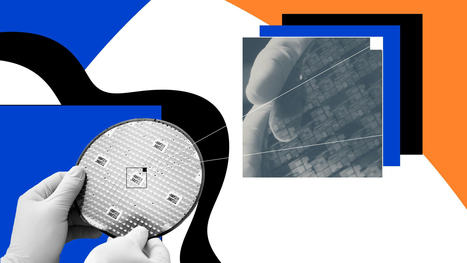






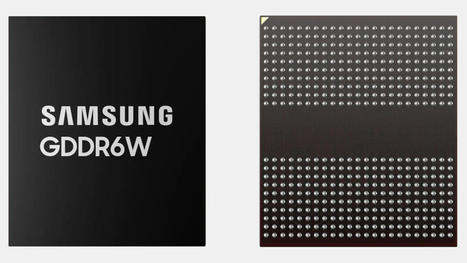
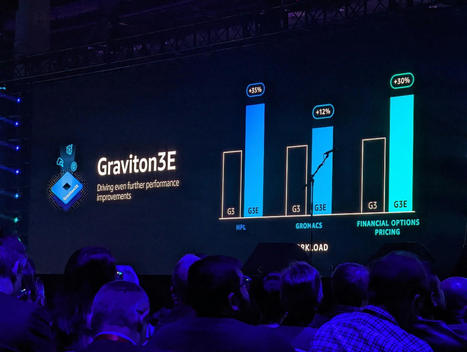






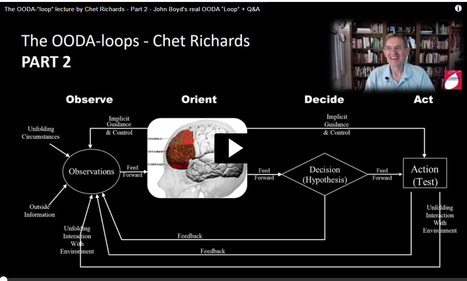
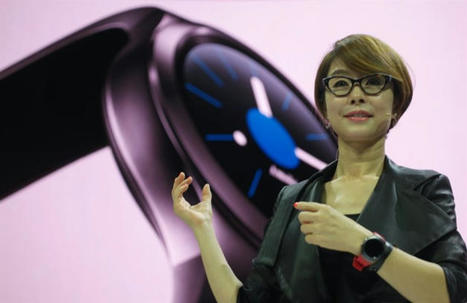





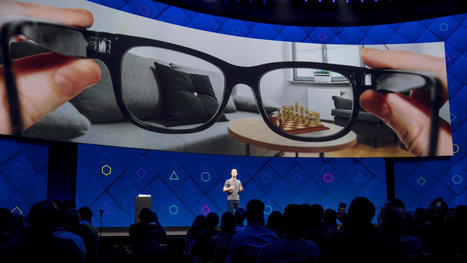





At this year’s IEDM conference, IBM laid out the groundwork for a near future where semiconductors with nodes at 1nm and smaller are possible. This post is on the VTFET design was a part of a collaborative effort between Samsung and IBM that produced this revolutionary new chip design, and intended to preserve the idea of Moore's Law for Samsung Electronics and to gain a competitive advantage over Intel Corporation in their bid to put more distance technically between Intel and Samsung on the logic side of the business. Samsung did employ the use of #TRIZ methods in this collaboration, which were used in helping to overcome the contradictions and tradeoffs w/in the design and manufacturing process, but they needed IBM's CPU design competency to do it, they'd been trying for years on their Exynos design's and failing, but this effort should not be overlooked by any of the major OEMs in the semiconductor industry.